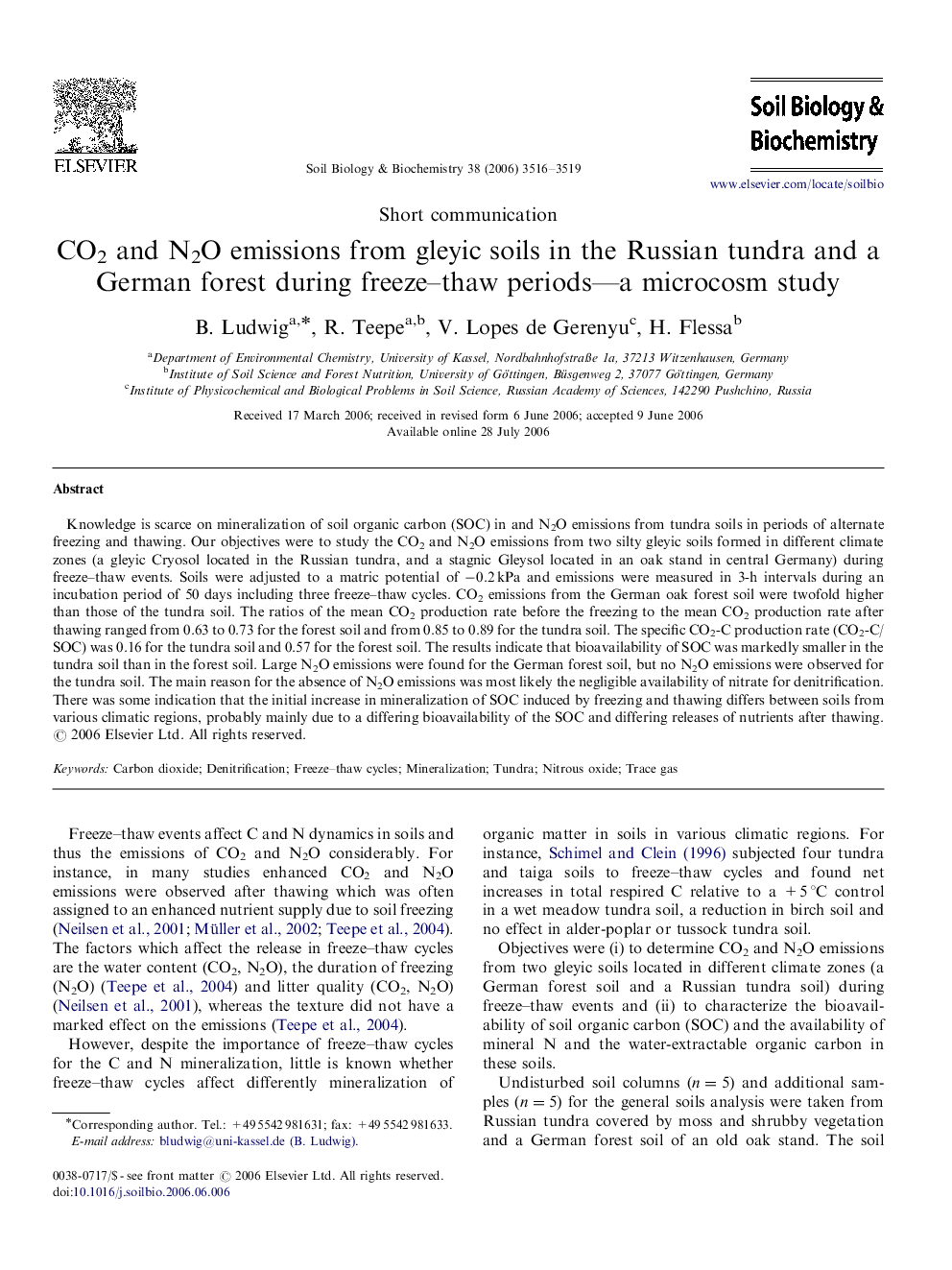| Article ID | Journal | Published Year | Pages | File Type |
|---|---|---|---|---|
| 2027096 | Soil Biology and Biochemistry | 2006 | 4 Pages |
Knowledge is scarce on mineralization of soil organic carbon (SOC) in and N2O emissions from tundra soils in periods of alternate freezing and thawing. Our objectives were to study the CO2 and N2O emissions from two silty gleyic soils formed in different climate zones (a gleyic Cryosol located in the Russian tundra, and a stagnic Gleysol located in an oak stand in central Germany) during freeze–thaw events. Soils were adjusted to a matric potential of −0.2 kPa and emissions were measured in 3-h intervals during an incubation period of 50 days including three freeze–thaw cycles. CO2 emissions from the German oak forest soil were twofold higher than those of the tundra soil. The ratios of the mean CO2 production rate before the freezing to the mean CO2 production rate after thawing ranged from 0.63 to 0.73 for the forest soil and from 0.85 to 0.89 for the tundra soil. The specific CO2-C production rate (CO2-C/SOC) was 0.16 for the tundra soil and 0.57 for the forest soil. The results indicate that bioavailability of SOC was markedly smaller in the tundra soil than in the forest soil. Large N2O emissions were found for the German forest soil, but no N2O emissions were observed for the tundra soil. The main reason for the absence of N2O emissions was most likely the negligible availability of nitrate for denitrification. There was some indication that the initial increase in mineralization of SOC induced by freezing and thawing differs between soils from various climatic regions, probably mainly due to a differing bioavailability of the SOC and differing releases of nutrients after thawing.
